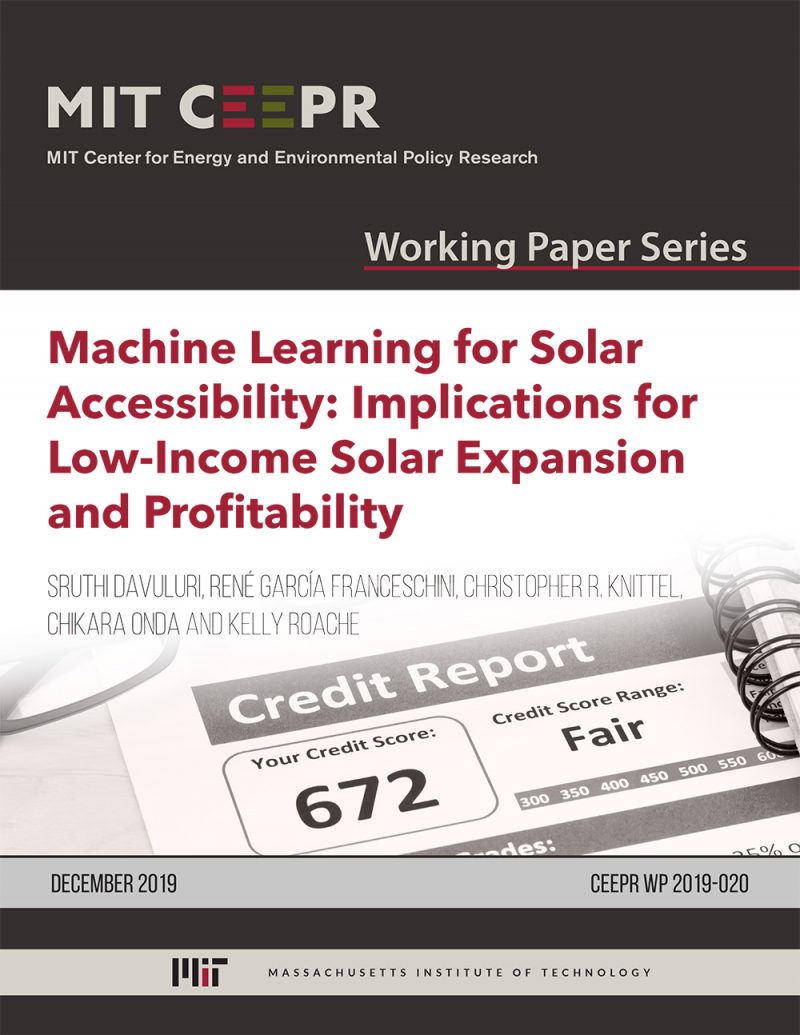Machine Learning for Solar Accessibility: Implications for Low-Income Solar Expansion and Profitability
Sruthi Davuluri, René García Franceschini, Christopher R. Knittel, Chikara Onda, and Kelly Roache
December 2019
The solar industry in the United States typically uses a credit score such as the FICO score as an indicator of consumer utility payment performance and credit worthiness to approve customers for new solar installations. Using data on over 800,000 utility payment performance and over 5,000 demographic variables, we compare machine learning and econometric models to predict the probability of default to credit-score cutoffs. We compare these models across a variety of measures, including how they affect consumers of different socio-economic backgrounds and profitability. We find that a traditional regression analysis using a small number of variables specific to utility repayment performance greatly increases accuracy and LMI inclusivity relative to FICO score, and that using machine learning techniques further enhances model performance. Relative to FICO, the machine learning model increases the number of low-to-moderate income consumers approved for community solar by 1.1% to 4.2% depending on the stringency used for evaluating potential customers, while decreasing the default rate by 1.4 to 1.9 percentage points. Using electricity utility repayment as a proxy for solar installation repayment, shifting from a FICO score cutoff to the machine learning model increases profits by 34% to 1882% depending on the stringency used for evaluating potential customers. This research shows that it is possible to extend solar to a larger number of qualified applicants with lower or no credit scores, while at the same time decreasing default risk, thus opening up access to an untapped, low-risk market segment.



